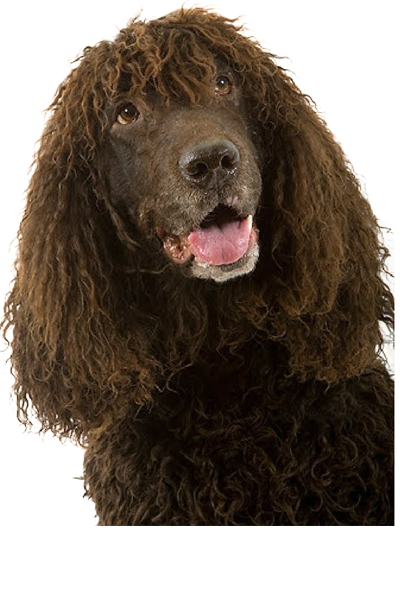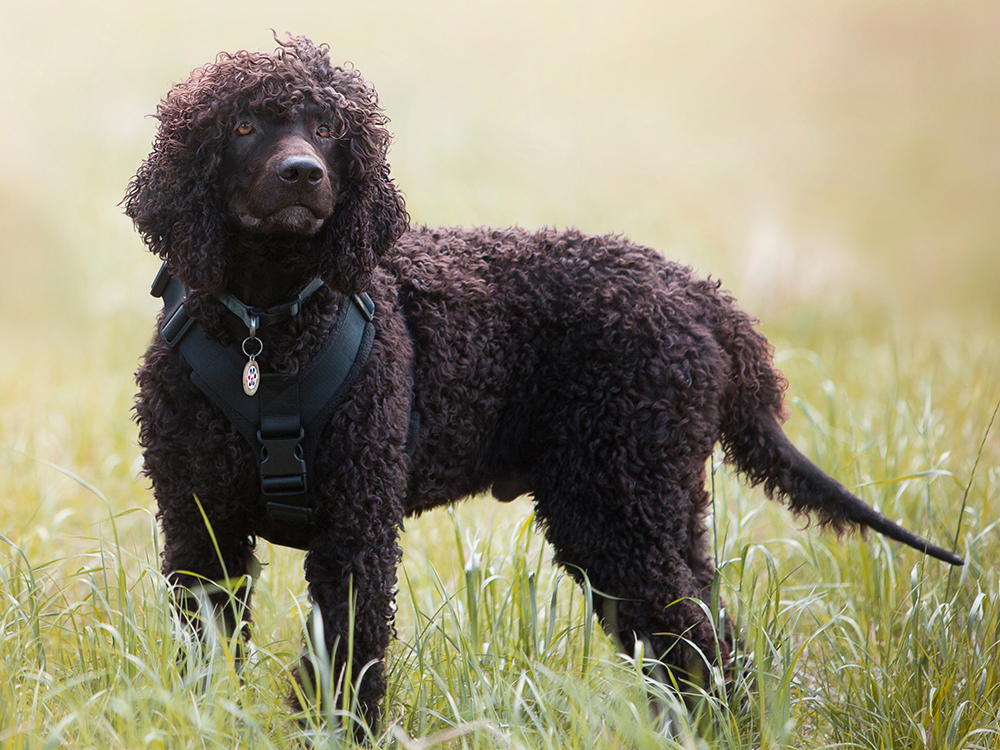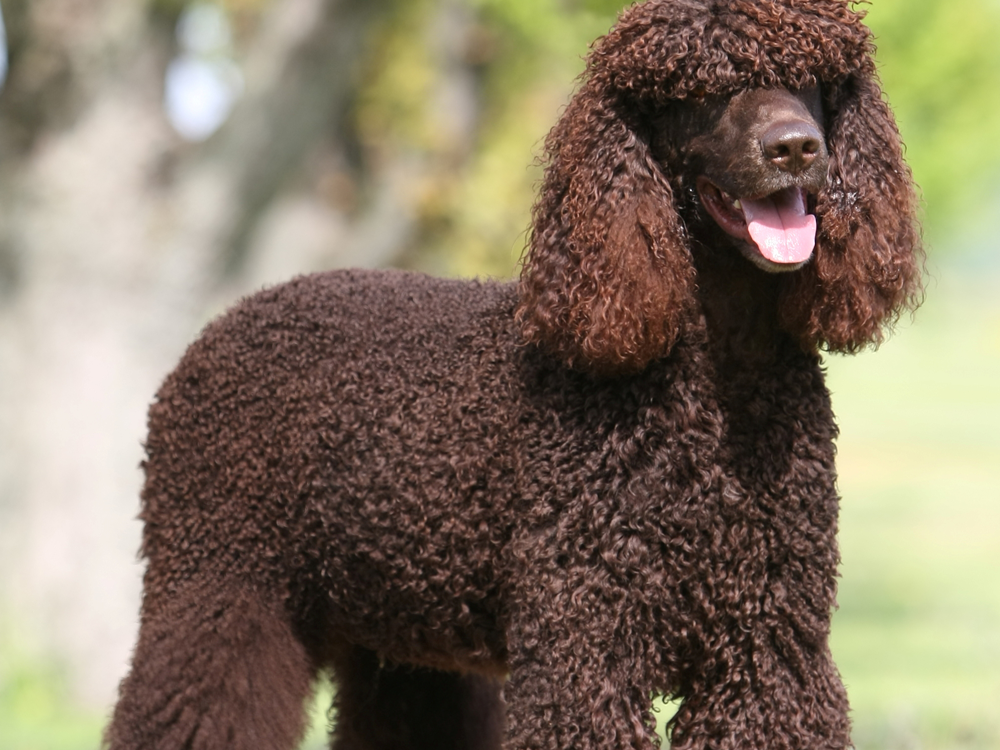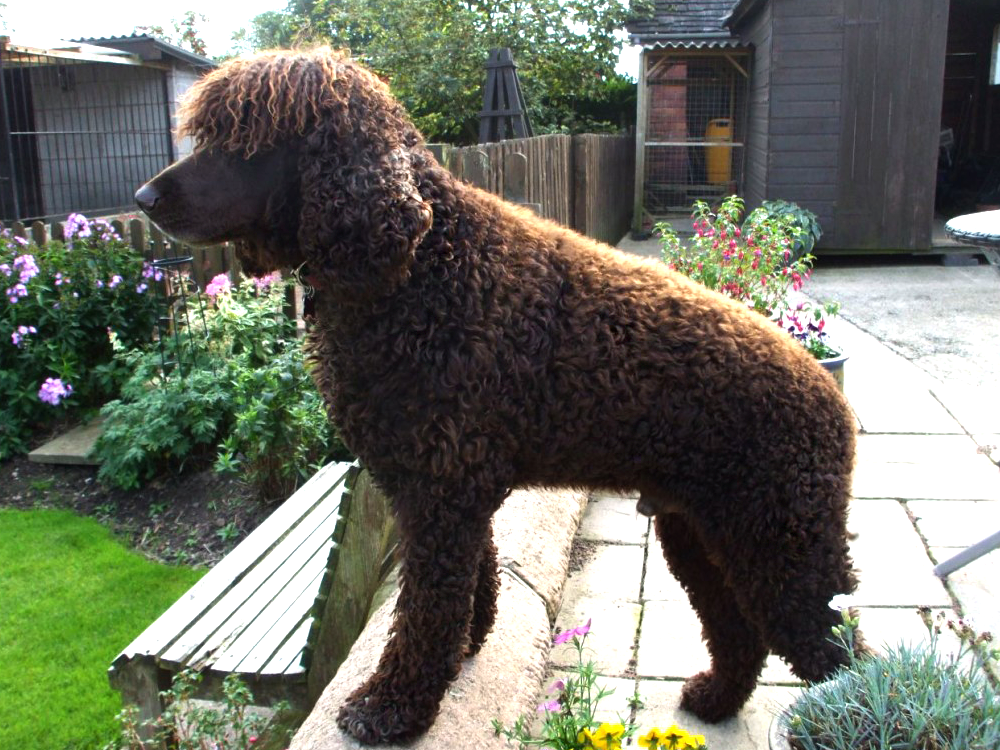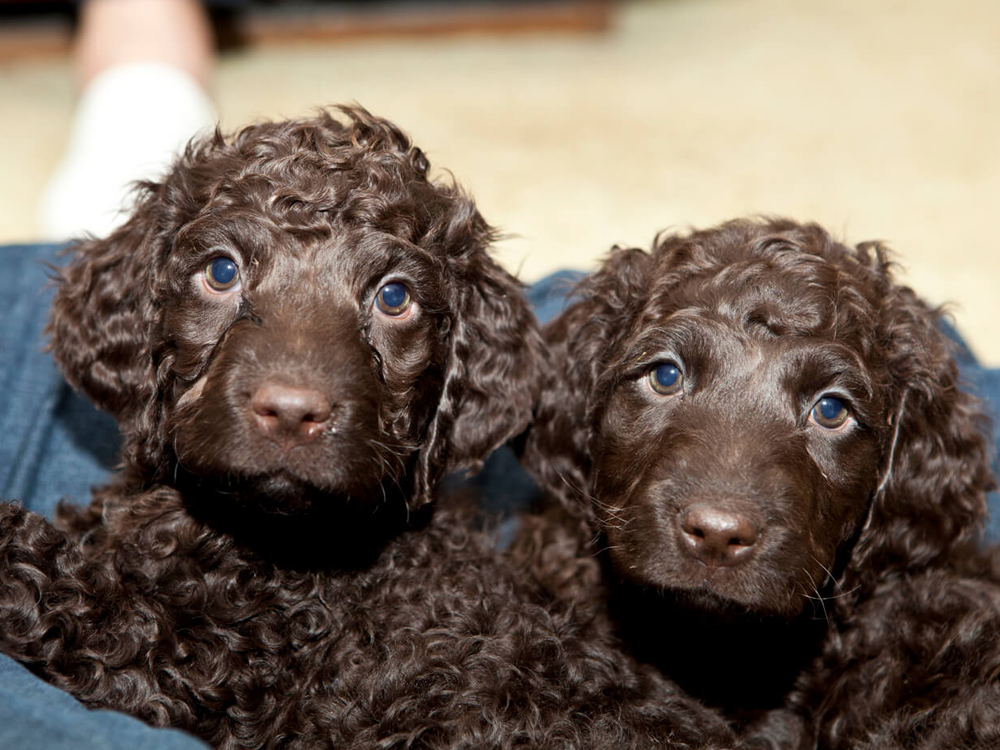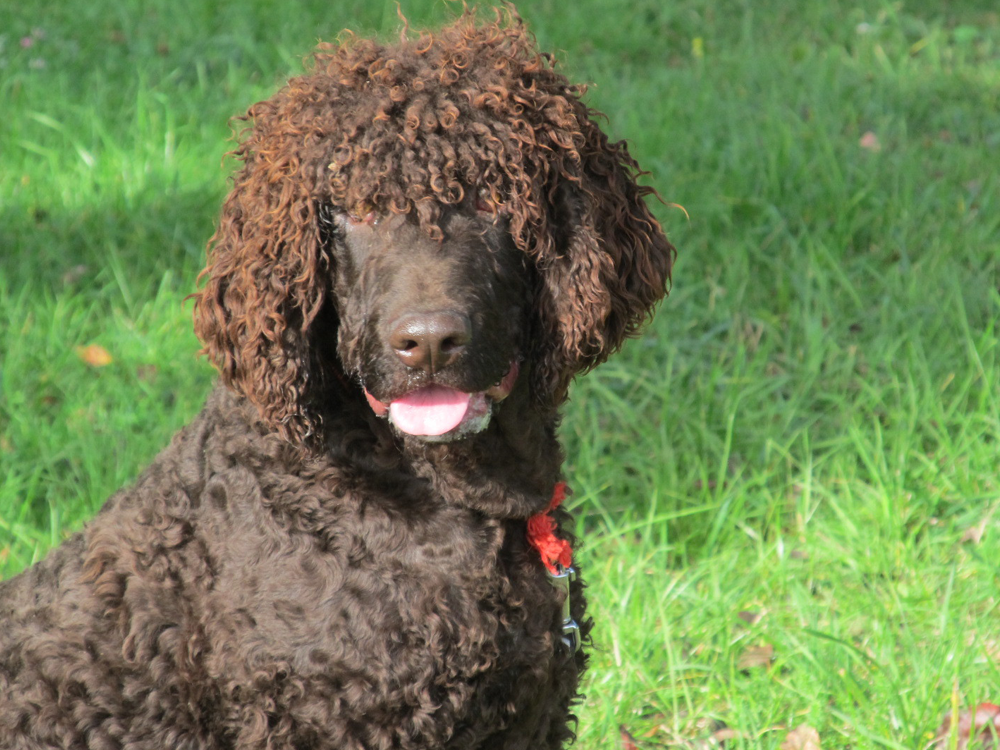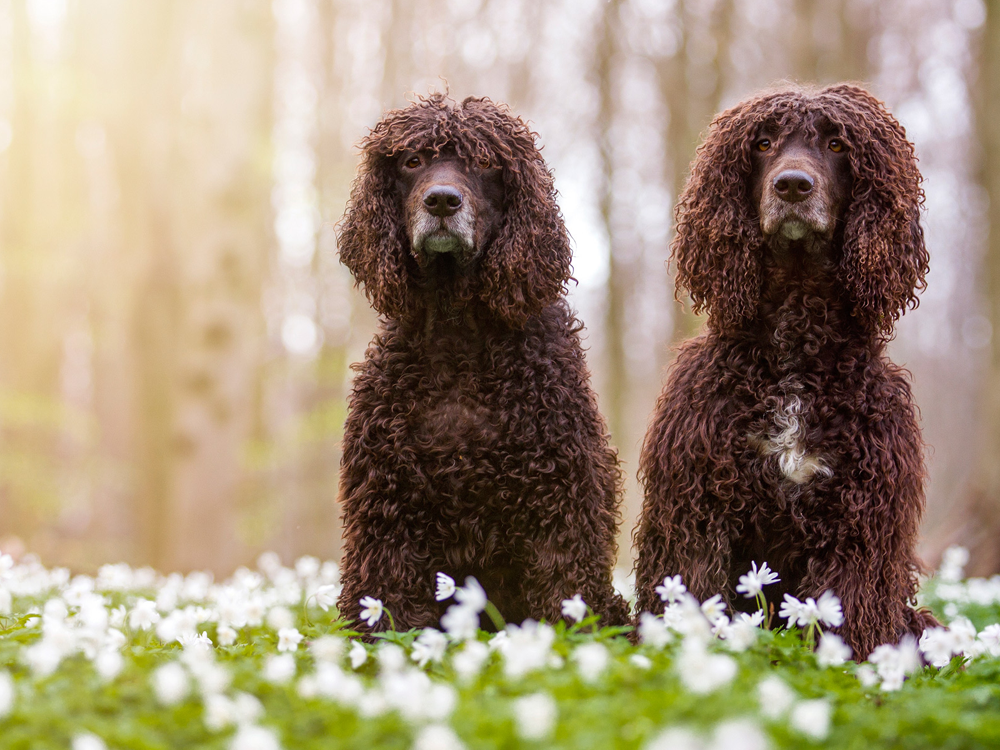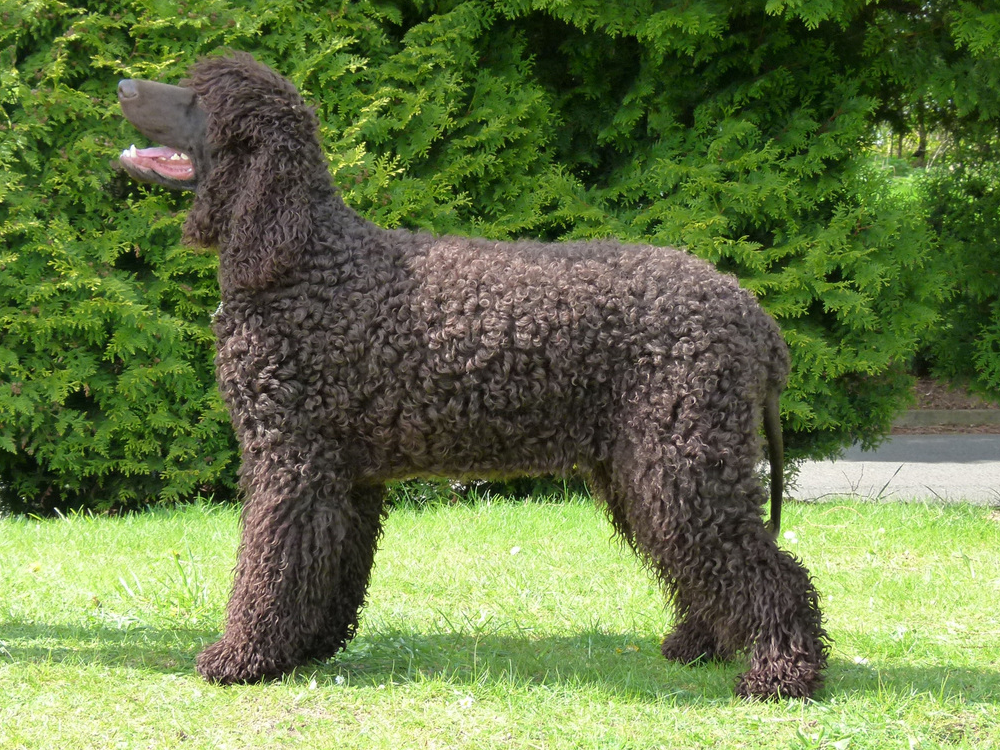
Irish Water Spaniel Breed Pictures
Vital Breed Stats
| Height: | 51 - 58 cm M | 51 - 58 cm F |
| Weight: | 20 - 30 kg M | 20 - 30 kg F |
| Breed Group: | Gundog Dog Group |
| Life Expectancy: | 10 - 13 years |
| KC Registered: | No |
Breed Characteristics
| Size: |  |
| Grooming: |  |
| Exercise Level: |  |
| Trainability: |  |
| Barking Level: |  |
| Good with Children: |  |
| Good with other pets: |  |
| Affectionate: |  |
| Protective: |  |
| Cost to Keep: |  |
Give a thumbs up if you love the Irish Water Spaniel

0
More About the Breed
History
The Irish Water Spaniel is one of the native breeds of Ireland, along with the Irish terrier, Glen of Imaal terrier, and Irish wolfhound. The Irish water spaniel (IWS) dates back to least one thousand years and is believed to be the descendant of the Dobhar-chu (translates as water hound), a mythical creature from the Irish folklore.
There is speculation that its genetic make-up was developed from more than one ancient spaniel breed. However, there was no historical evidence to support such a theory since the acknowledged breeder of the Irish Water Spaniel, Justin McCarthy, did not leave any records. Few breeds were suggested as its ancestry, including the poodle, barbet, Portuguese water dog, some northern and southern water spaniels, and even the now-extinct English water spaniel.
All these are mere speculations without substantial proof, but one thing is for sure—the Irish Water Spaniel has ancient roots. The modern Irish Water Spaniel we see today was developed in Ireland in the 1830s through Boatswain, Justin McCarthy's dog. This particular Irish water spaniel lived from 1834 to 1852, siring a couple of excellent hunting and show dogs. In 1862, the first Irish Water Spaniel appeared in a dog show in Birmingham, and in 1899 in a field trial. The breed is recognised by the Kennel Club in the UK.
Appearance
The Irish Water Spaniel is the largest and the oldest of the spaniel breeds. It weighs 45–65 pounds and stands 51–58 centimetres at the withers. It has several distinct characteristics that make it an easily recognisable breed such as the topknot of long and loose curls from the head often covering the eyes, the beard that grows from the throat along with sideburns, and a curled coat giving it its rugged appearance. Another distinguishing feature is its smooth rat tail, which is devoid of any coat except at the base where it is covered with 2–3 inches of curls. Its webbed feet meant for a powerful swim completes the picture of a bold and dashing dog breed.
When it comes to its coat, the IWS sports a tightly curled double-layered coat with a dense, short, and thick undercoat and a longer outer coat for protection. Its coat always comes in solid liver colour, often described as a deep reddish brown.
Grooming
The Irish Water Spaniel sheds lightly, but unlike other dog hair types, it does not cling to the furniture or clothing. Brush or comb the coat at least once to thrice a week as needed to remove matts or tangles. If you want your Irish water spaniel to have a neater look, have its coat trimmed every 6–8 weeks, including the fur around the footpad. You can take your dog to the professional groomer or ask the breeder to teach you how to do it.
Frequent baths are not necessary since this will only remove the protective oil from its coat. However, getting the coat a bit wet will help form those pretty ringlets that give the Irish water spaniel its distinct look. The rest is simple grooming regimen. Check the ears regularly for signs of infections and keep them clean and dry especially after your IWS went swimming. Trim the nails at least every week and brush the teeth frequently using a vet-approved toothpaste.
Temperament
Intelligence
The Irish Water Spaniel is wary of other people, especially strangers, but will never exhibit aggressive behaviour unless it senses that its family is in danger. It is alert and curious and will not hesitate to bark to alert its family, which makes it an excellent watchdog. Since this dog breed has a strong desire to please, it is easy to train. However, its high intelligence and independent nature make it less suitable for first-time owners with no experience in handling this type of active breed.
When it comes to getting along with children, the Irish water spaniel is affectionate and a great playmate. But then again, supervision is still warranted to avoid accidents especially when interaction becomes too boisterous. It gets on well enough with other dogs and even cats if socialised early. However, it will think nothing of chasing the neighbours' small furry animals when given a chance.
Nutrition
- Senior and less active: up to 1,252 calories daily
- Typical adults: up to 1,400 calories daily
- Physically active/working dogs: up to 1,565 calories daily
Feeding
Health
Exercise
Cost of Ownership
If you intend to buy an Irish water spaniel puppy, prepare to pay anything from £400 to £800, especially for a well-bred one. The next thing you'll need to search for is affordable pet insurance. Most often, costs to insure a dog will depend on your location and the age and health of the dog. An estimated quote from 2016 reveals that the cost to insure a three-year-old IWS is around £20.16 to £44.22 a month.
How much you'll pay for dog food will vary depending on the age and size of your Irish water spaniel, but a safe bet is around £40 to £50 a month, excluding treats. Let's not forget veterinary visits to make sure your Irish water spaniel is in top shape. Veterinary consultations including basic procedures such as initial vaccinations, annual boosters, and the cost of neutering/spaying will quickly set you back over £1,000 a year. In a rough estimate, the cost to raise or care for an Irish water spaniel will be around £70 to £100 a month.
Is an Irish Water Spaniel Right for You?
- The Irish Water Spaniel is a people-loving dog with a strong desire to please.
- It forms a strong attachment with its family and suffers from separation anxiety.
- It sheds slightly and will need to be brushed at least once to three times a week.
- It is alert and curious, which barks to alert its family, making it an excellent watchdog.
- Irish water spaniel is an active breed since it was bred to be a sporting dog. It craves for outdoor activities.
